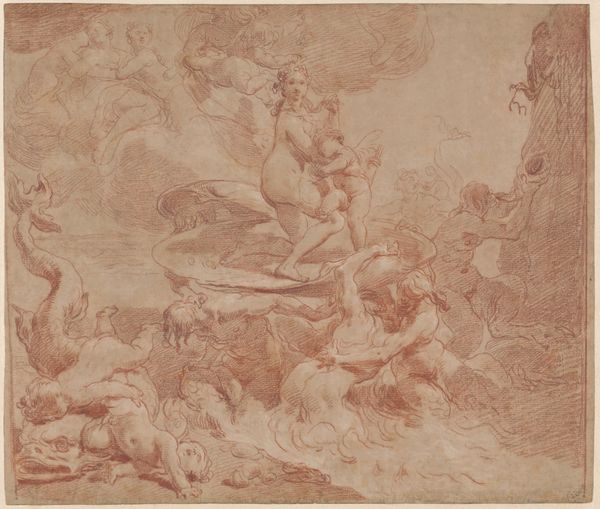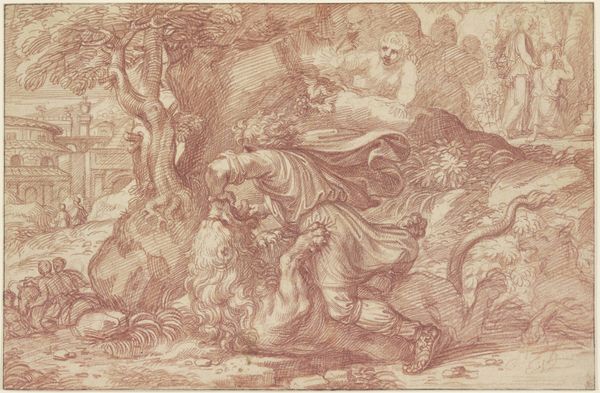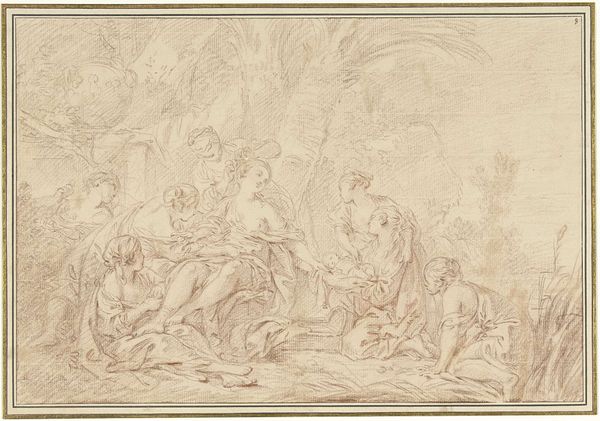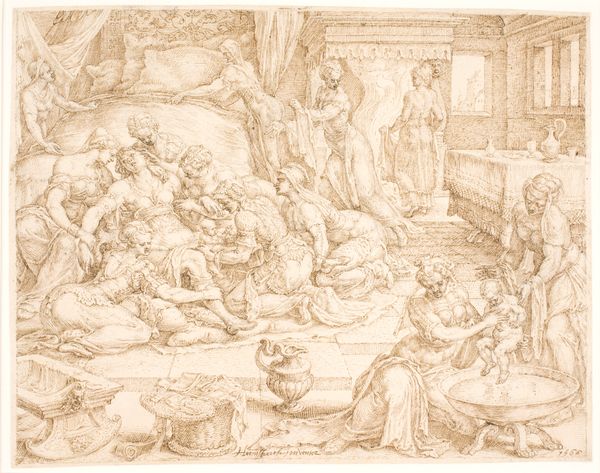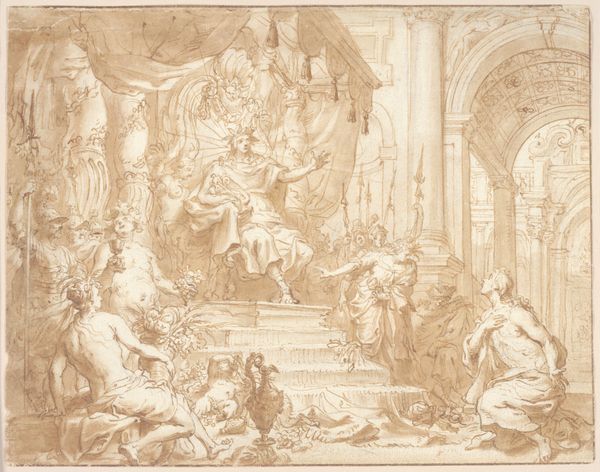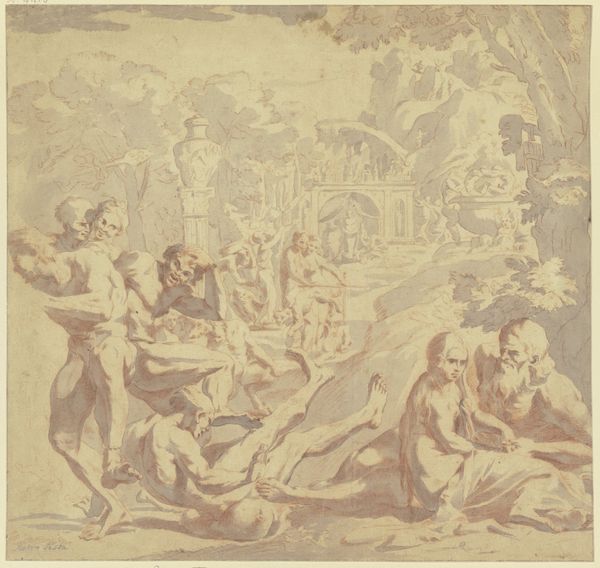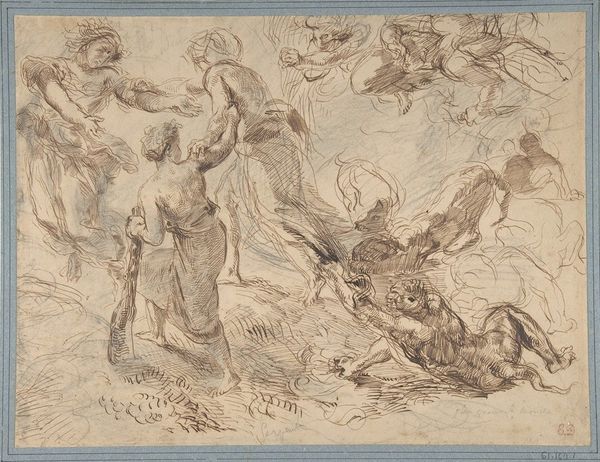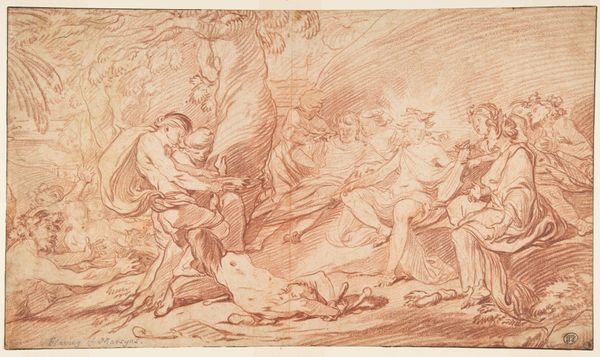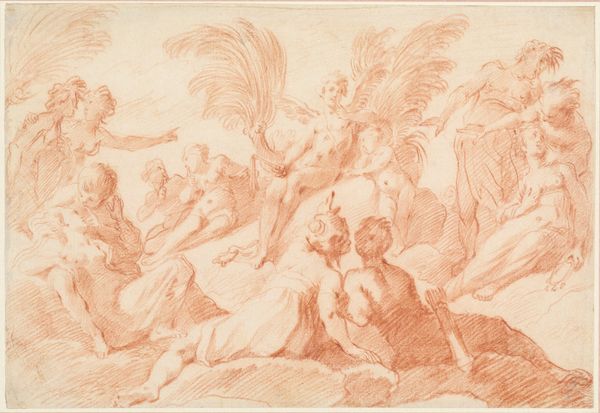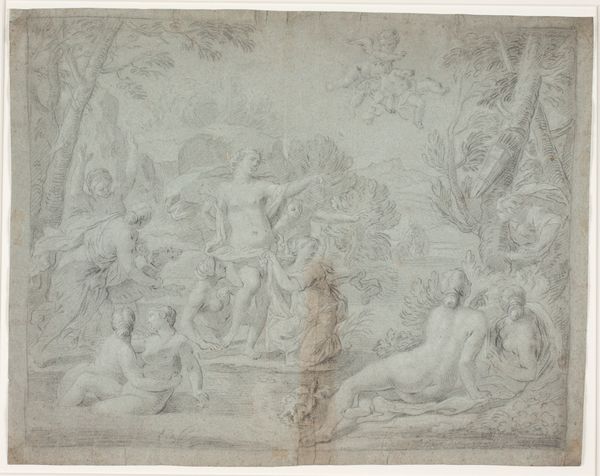
Reclining nymph in a garden with fountain, vase and three cupids 1632 - 1657
0:00
0:00
drawing
#
portrait
#
drawing
#
allegory
#
baroque
#
landscape
#
oil painting
#
watercolour illustration
#
genre-painting
#
nude
Dimensions: 199 mm (height) x 267 mm (width) (bladmaal)
Curator: This drawing, housed here at the SMK, is entitled "Reclining Nymph in a Garden with Fountain, Vase, and Three Cupids" by Bartolomeo Biscaino, dating back to between 1632 and 1657. Editor: It's rendered in a warm sanguine wash; everything seems bathed in terracotta light, a very dreamlike atmosphere. The nymph seems lost in her thoughts and surrounded by what looks like some fabric and a lot of putti! Curator: Yes, and considering Biscaino's influences, the scene invites interpretation within the framework of the baroque era, where art was often didactic. The nymph embodies feminine virtue and divine grace, whilst her repose echoes both power and vulnerability. The cupids serve to elevate her status as an allegorical figure and amplify the thematic richness. Editor: What's striking is the material rendering. The way the red chalk creates the varied textures – the smoothness of the nymph’s skin juxtaposed with the rough-hewn garden, plus all those classical ornamentations, it showcases Biscaino’s keen observational abilities. What I would love to understand more is the labor behind creating these fine materials, as it underscores larger class divisions. Curator: Exactly, and in dissecting the material circumstances under which this drawing was produced, we also consider who its intended audience would have been, for example, as part of a printmaking process. How does such material access inform the narrative power embedded in the work, particularly for female viewers? Editor: Yes! And furthermore, do we know where he sourced the sanguine chalk and did its particular color offer more accessibility compared to other material during the period? Or how his studio impacted the materiality of this work through their unique labour input. Curator: Examining the symbolic potential allows for deeper interpretations about feminine beauty and naturalness within complex patriarchal systems. These details enrich and add greater historical depth into these visual stories. Editor: Ultimately, considering the intersectionality in class, production, labor, and gender relations in relation to how materials are sourced helps broaden Biscaino’s drawing's historical impact for the modern audience. I find this methodology to reveal layers that are oft unaddressed. Curator: And that layered approach expands Biscaino’s drawing into an ever-relevant, dynamic narrative today!
Comments
No comments
Be the first to comment and join the conversation on the ultimate creative platform.
